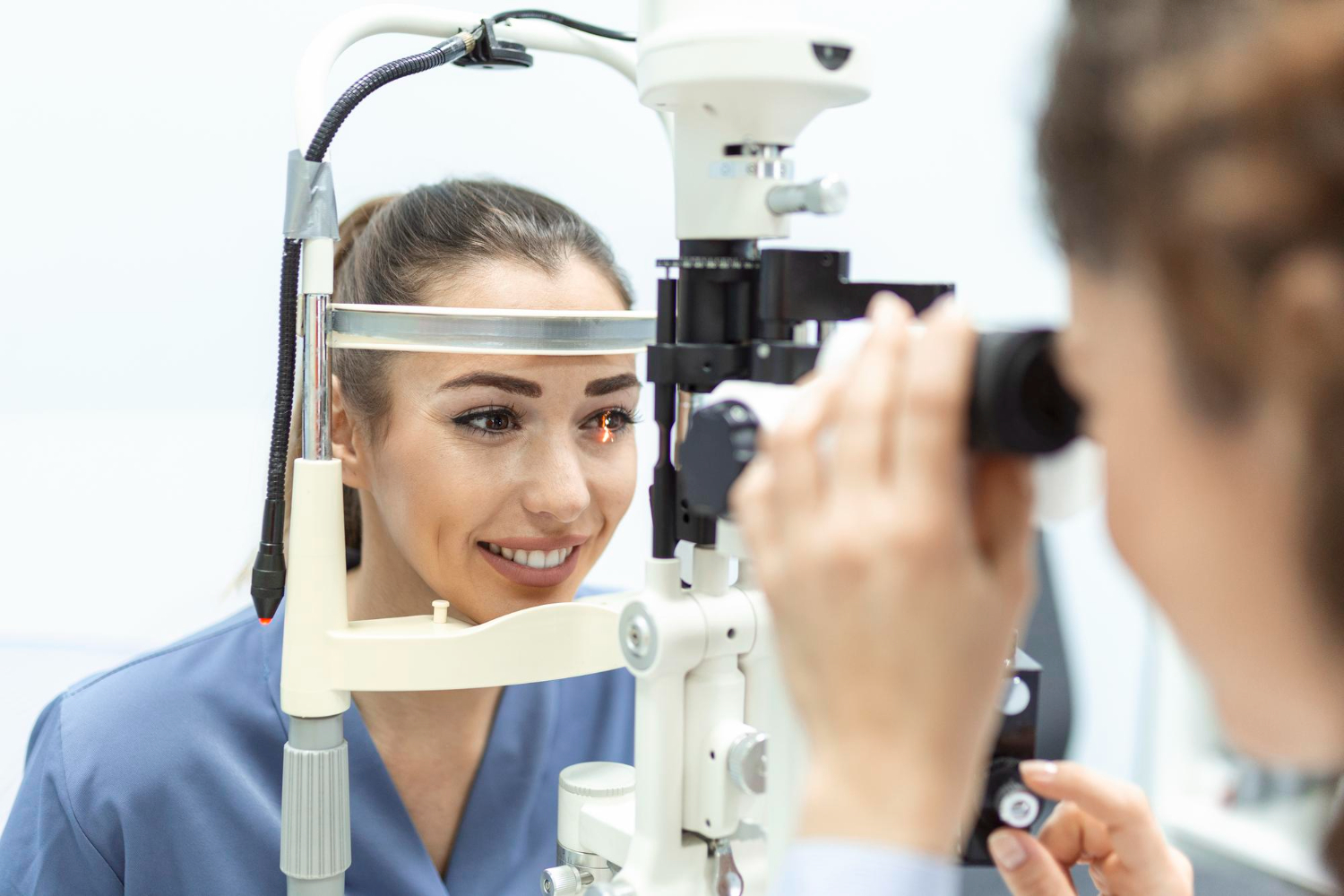LASIK (Laser-Assisted in Situ Keratomileusis) is a popular and commonly used surgical procedure for correcting common visual abnormalities such as myopia, hyperopia, and astigmatism. By reshaping the cornea, the transparent front surface of the eye, LASIK surgery can minimize or eliminate the need for glasses or contact lenses.

The following is a summary of the LASIK process, including its advantages, dangers, and considerations:
Procedure Steps
Consultation:
Prior to LASIK, you will have a thorough eye examination to establish your suitability for the operation. Your eye health, prescription stability, and corneal thickness will all be assessed.
Corneal Flap Creation:
A tiny flap is generated on the cornea during the LASIK treatment using either a microkeratome (a mechanical instrument) or a femtosecond laser (a laser device). To reveal the underlying corneal tissue, the flap is raised.
Corneal Reshaping:
A precision excimer laser is used to remodel the cornea by eliminating minute quantities of tissue. This reshaping is particular to your visual prescription.
Flap Replacement:
After the corneal reshaping is finished, the corneal flap is carefully reinstalled. Sutures are not required because it adhere naturally.
Healing and Recovery:
The corneal flap heals fast, and most patients notice an improvement in their eyesight within a day or two. Full healing might take many weeks.
Benefits
Vision Correction:
LASIK can significantly reduce or eliminate the need for glasses or contact lenses, allowing for clear vision in a variety of situations.
Quick Recovery:
Many patients notice an improvement in their vision within a day or two after the surgery.
Minimal Discomfort:
The operation is usually painless and causes just minor discomfort. To numb the eye, anesthetic eye drops are utilized.
Rapid Visual Improvement:
The visual improvement gained by LASIK is generally visible immediately after the treatment.
Risks and Considerations
Dry Eyes:
Although temporary dryness and pain may develop during LASIK, it normally fades with time with artificial tears.
Halos and Glare:
Some patients, especially at night, may suffer visual disturbances such as halos, glare, or starbursts. These symptoms frequently improve with time.
Overcorrection or undercorrection:
In certain circumstances, the intended amount of vision correction may not be reached, necessitating the use of further treatments.
Regression:
As a result of variables such as aging, vision may alter over time, necessitating the need of spectacles once more.
Corneal Flap issues:
Although uncommon, issues linked to the development of the corneal flap, such as flap displacement or epithelial ingrowth, can arise.
Not Suitable for All:
Individuals with specific eye disorders, extremely dry eyes, unstable prescriptions, or certain health issues may not be candidates for LASIK.
Precautions and Candidacy:
It is critical to contact with an expert eye surgeon to evaluate whether LASIK is right for you. Your surgeon will take your age, prescription stability, general eye health, and expectations into account.
Types of LASIK
Traditional LASIK:
As previously explained, this is the typical LASIK process that involves the development of a corneal flap using a microkeratome or femtosecond laser, followed by corneal reshaping with an excimer laser.
Custom LASIK (Wavefront-guided LASIK):
This sophisticated LASIK procedure use wavefront technology to provide a comprehensive map of your eye’s unique features. This map directs the laser as it reshapes the cornea, potentially improving visual quality and lowering higher-order aberrations.
Bladeless LASIK:
Also known as “All-Laser LASIK,” this treatment creates the corneal flap with a femtosecond laser, removing the need for a microkeratome. It allows for more exact flap generation and may result in a speedier recovery.
Recovery and Aftercare
Following LASIK surgery, you will be given particular post-operative instructions, which may include:
1 Prescription eye drops are used to prevent infection and improve recovery.
2 Swimming and intense exercise, for example, are activities that should be avoided for a certain amount of time because they may raise the risk of infection or damage.
3 Wearing protective eyewear and shielding your eyes from bright lights as directed.
4 Attending follow-up visits to track your healing process and resolve any issues that arise.
To ensure appropriate healing and the best outcomes, always adhere to your surgeon’s recommendations.
Long-Term Results
While LASIK can give long-term vision correction, it is crucial to know that while it can considerably reduce your reliance on glasses or contact lenses, it may not completely eliminate the need for them. Age-related alterations in vision (presbyopia) might have an influence on your vision over time.
Choosing a Surgeon
Choosing a skilled and respected surgeon is critical to the outcome of your LASIK treatment. When selecting a surgeon, consider the following:
1 Examine the surgeon’s credentials, experience, and patient feedback.
2 Make an appointment to discuss your candidacy, ask questions, and resolve any concerns.
3 Inquire about the procedure’s technique and equipment.
Alternatives to LASIK
PRK (Photorefractive Keratectomy):
PRK, like LASIK, involves reshaping the cornea with an excimer laser, but instead of generating a flap, the corneal epithelium is destroyed. PRK may be suggested for individuals who have weaker corneas or other circumstances that make LASIK ineffective.
SMILE (Small Incision Lenticule Extraction):
A recent surgery that includes making a tiny incision in the cornea and retrieving a lenticule from within it to reshape it. For some applicants, it is a less invasive choice.
Cost
The cost of LASIK varies according to factors such as the surgeon’s skill, the technology employed, and the patient’s geographic location. Inquire about the overall cost, which should include pre-operative and post-operative care.
Remember that, while LASIK can provide several advantages, it is a medical surgery with variable outcomes. Consultation with a trained eye care specialist will assist you in determining the best vision correction choice for your eye health, prescription, and lifestyle.

